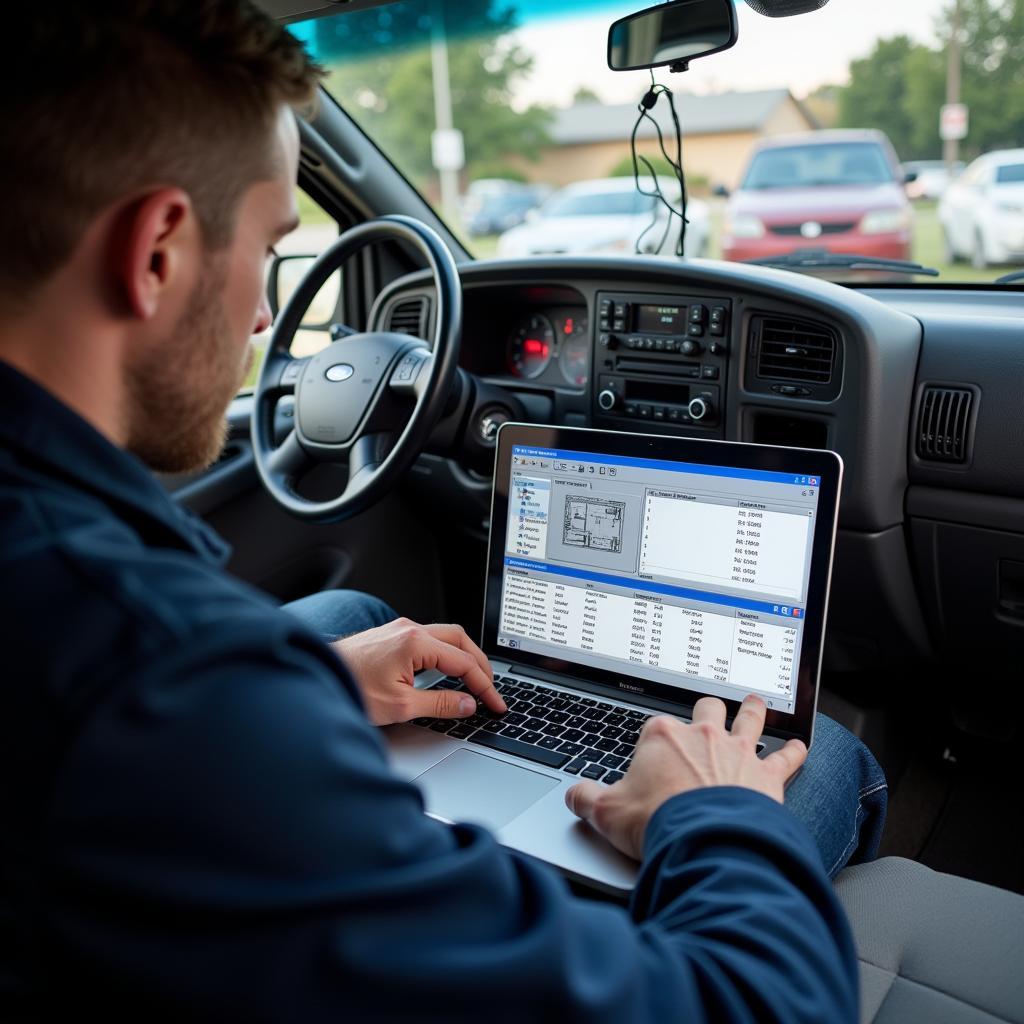The brake warning light on your 1998 Ford E350’s dashboard is a crucial safety feature, designed to alert you to potential issues within your braking system. Ignoring this warning light could lead to serious safety hazards. This article provides a comprehensive guide to understanding, diagnosing, and resolving problems related to your 1998 Ford E350 dashboard brake warning bulb.
Understanding Your E350’s Brake Warning System
Your E350’s brake warning system relies on several components working together to ensure optimal braking performance and alert you to potential problems. These components include:
- Brake Warning Light: This light, typically red or amber, illuminates on your dashboard when the system detects an issue.
- Brake Fluid Level Sensor: This sensor monitors the brake fluid level in the master cylinder, triggering the warning light if the fluid drops below a safe level.
- Parking Brake Switch: Engaging your parking brake activates this switch, illuminating the warning light to remind you it’s engaged.
- Hydraulic System: The heart of your braking system, using brake fluid pressure to activate the calipers and stop your vehicle.
Common Causes of a Lit Brake Warning Bulb
A lit brake warning bulb in your 1998 Ford E350 can be caused by several factors, ranging from simple to complex:
- Low Brake Fluid: A common culprit, often caused by worn brake pads or a leak in the system.
- Worn Brake Pads: As brake pads wear down, the calipers need more brake fluid to generate stopping power, potentially lowering the fluid level and triggering the warning light.
- Brake Fluid Leak: Leaks can occur in various areas, such as brake lines, hoses, or even the master cylinder. A leak will compromise your braking performance.
- Faulty Brake Light Switch: The switch connected to your brake pedal can malfunction, causing the brake lights and warning light to illuminate incorrectly.
- ABS Issue (if equipped): Vehicles equipped with Anti-lock Braking Systems (ABS) may have a dedicated warning light. However, an ABS issue can sometimes trigger the general brake warning light as well.
Diagnosing the Problem: A Step-by-Step Guide
Before rushing to a mechanic, you can perform some basic checks:
- Check the Parking Brake: Ensure the parking brake is fully disengaged. If the light remains on, proceed to the next step.
- Inspect Brake Fluid Level: Carefully open the master cylinder reservoir (refer to your owner’s manual for location and instructions) and check the fluid level. It should be between the “MIN” and “MAX” lines.
- Visual Inspection: Look for visible brake fluid leaks around the master cylinder, brake lines, hoses, and near the wheels.
When to Seek Professional Help
If you’ve performed the basic checks and the brake warning light persists, or if you discover a brake fluid leak, it’s crucial to seek professional help immediately.
“Ignoring a brake warning light is never worth the risk,” says master mechanic John Smith. “Your brakes are essential for your safety and the safety of others on the road.”
Remote Diagnostic and Programming Services: The Future of Automotive Repair
Advancements in automotive technology have paved the way for remote diagnostic and programming services. These services allow skilled technicians to diagnose issues and, in some cases, even program certain vehicle modules remotely.
 Remote Automotive Diagnostics
Remote Automotive Diagnostics
While remote services may not always be able to address physical repairs like brake pad replacement or fixing a fluid leak, they can be invaluable for identifying electronic faults or software-related issues within the braking system.
Preventive Maintenance: Keeping Your Brakes in Top Shape
Regular brake system maintenance is crucial to prevent unexpected issues and ensure your safety:
- Brake Fluid Flush: Follow your owner’s manual for recommended brake fluid flush intervals. This procedure ensures optimal fluid condition and prevents corrosion within the system.
- Brake Inspections: Regular visual inspections of your brake lines, hoses, and calipers can help detect leaks or wear early on.
- Time-Based Replacement: Brake pads and other components have a limited lifespan. Consult your owner’s manual or a trusted mechanic for recommended replacement intervals.
Conclusion
A lit brake warning bulb on your 1998 Ford E350 dashboard should never be ignored. While simple issues like low brake fluid can often be addressed with basic checks, persistent warning lights or visible leaks require immediate attention from a qualified mechanic.
By understanding your vehicle’s braking system and adhering to preventive maintenance schedules, you can contribute to safe and reliable driving experiences for years to come.
